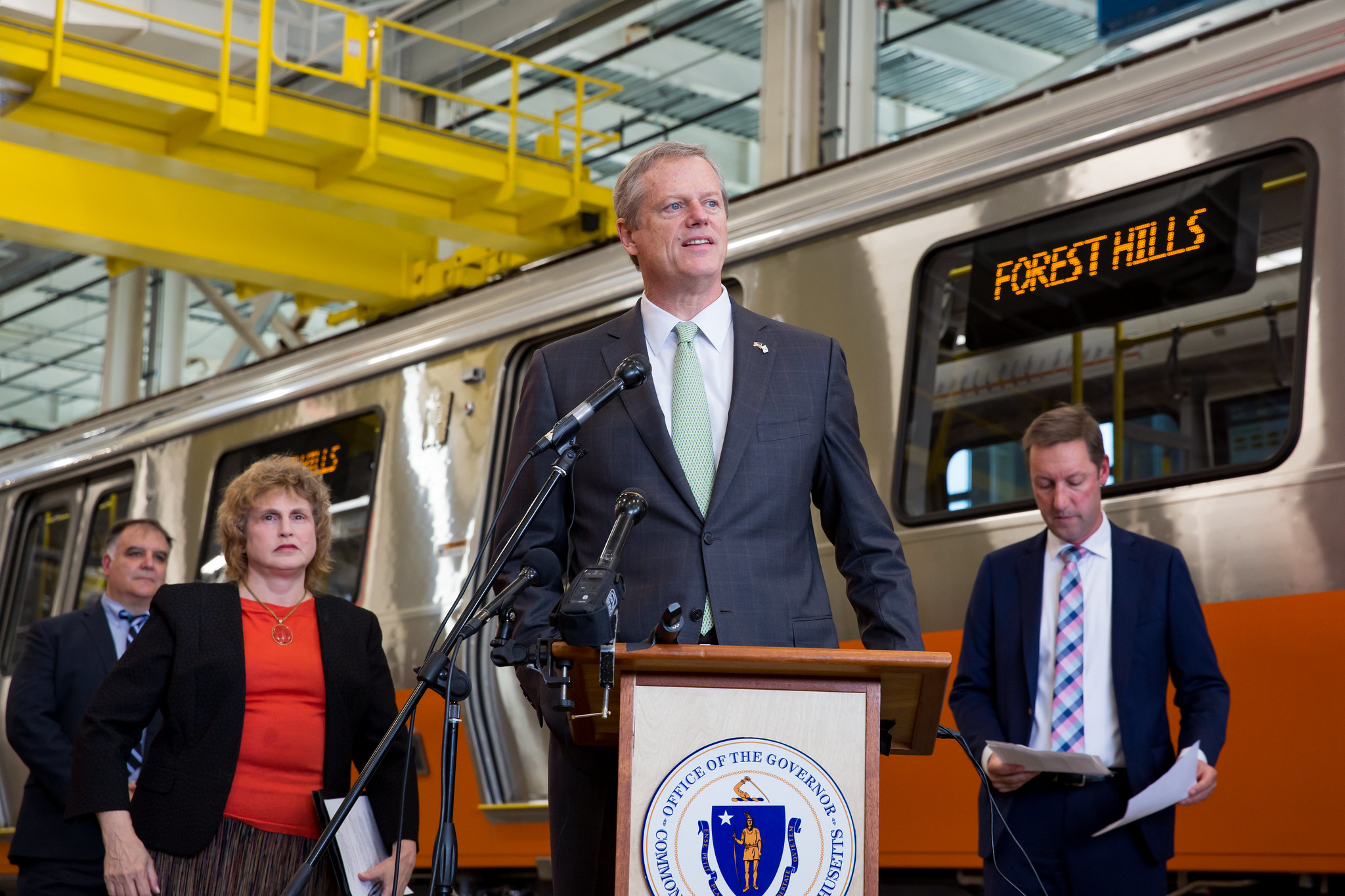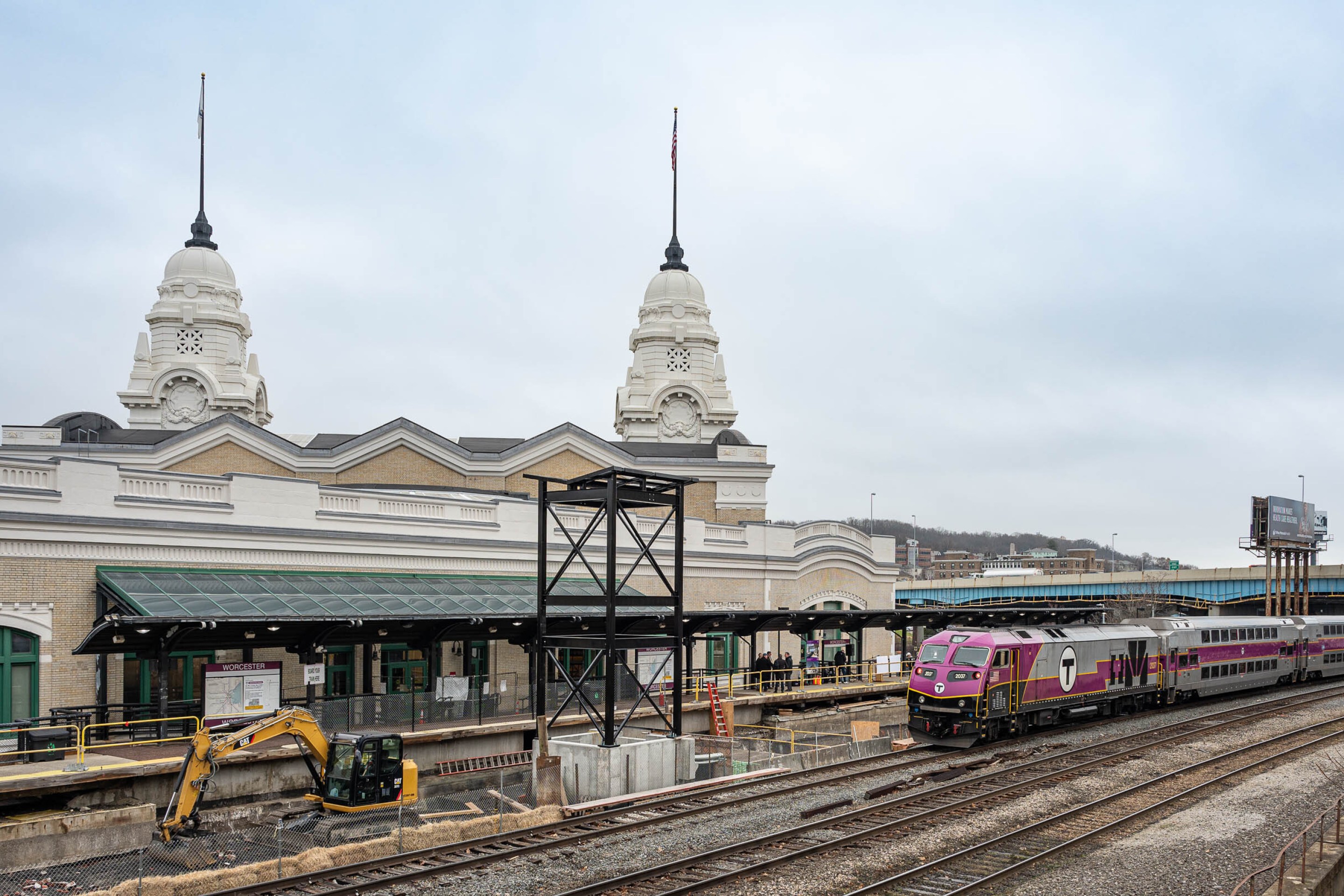The MBTA will scramble to find $400 million in budget savings over the next two years to prepare for the possibility of large budget gaps in 2022 and beyond.
General Manager Steve Poftak led a discussion of the agency’s bleak 2022 budget when the re-constituted MBTA Fiscal and Management Control Board (FMCB) met again on Monday morning, after a two-month hiatus.
As reported previously, the T typically relies on rider fares to cover roughly one-third of its annual operating budget. But with ridership currently at 10 to 15 percent of its typical levels, the agency expects to miss out on over half a billion dollars from reduced fare revenues this year.
The federal CARES Act passed in late March provided $827 million in relief funding for the MBTA – about $250 million of which had already been spent by June 30. The T expects to exhaust the remaining $577 million in CARES funding by June 30, 2021.
After that, though, the T expects ridership (and fare revenues) will still be below pre-pandemic levels, making large budget gaps a likelihood in the absence of additional relief funds from state and federal governments.
If ridership recovers to 80 percent of pre-pandemic levels over the next year, then the T's budget shortfall in 2022 will be a little over $300 million; under a more pessimistic scenario, the budget gap could grow to over $600 million.
In an attempt to plan ahead for those shortfalls, the T has begun a two-year budget planning process that incorporates the fiscal year 2022 budget with the remainder of the 2021 budget year (which started on July 1).
"By doing a two-year budget planning process, there's time to begin husbanding resources to address the deficits we anticipate in year two," explained Stephanie Pollack, Secretary and CEO of MassDOT, in a conversation with reporters on Monday morning before the FMCB meeting. "We're trying to make sure we don't have to do service cuts and layoffs in year two."
Poftak stressed that, for now, fare increases and layoffs are not being considered (and with ticket sales at historically low levels during the COVID-19 pandemic, a fare increase wouldn't generate much additional money anyhow).
Instead, the T plans a multi-pronged approach to address the looming budget crunch:
- Shifting federal "Section 5307" funds out of the T's capital construction budget and into preventative maintenance and repair programs under the annual operating budget, which could boost the bottom line of the operating budget with $80 million this year and up to $300 million in FY2022;
- Using more of the capital budget ($66 million in FY2021, and $68 million in 2022) to pay salaries for workers who are involved in the MBTA's capital projects (this is contingent on authorization from the state legislature, but language to enable this has been included in both the House and Senate versions of the transportation bond bill);
- A targeted $60 million in annual savings from yet-to-be-determined "ideas and proposals that reduce spending or increase revenue" from the MBTA's staff.
The first two of these three tactics would shift considerable funding out of the MBTA's 5-year capital investment plan, which funds track upgrades and station renovations in addition to large expansion projects like the Green Line Extension to Somerville.
Poftak said that the T would need to re-evaluate its capital project pipeline, and possibly delay some projects, in order to accommodate the shift in funds.
In his presentation to the FMCB, Poftak also discussed a planning and public outreach process for possible service cuts next summer, "based on observed ridership levels and budget constraints."
Planning for those service changes would begin this summer and fall, and include a range of service levels that could respond to the uncertain public health and economic conditions that might exist a year from now.





